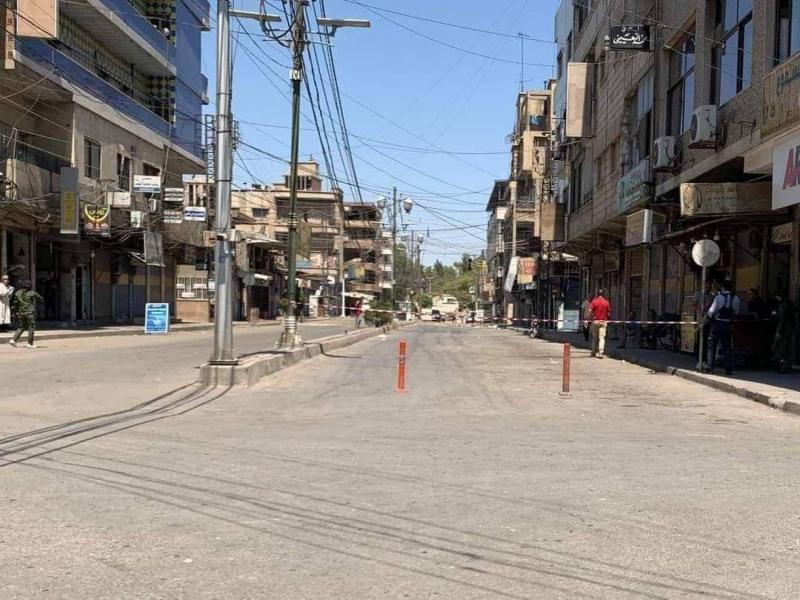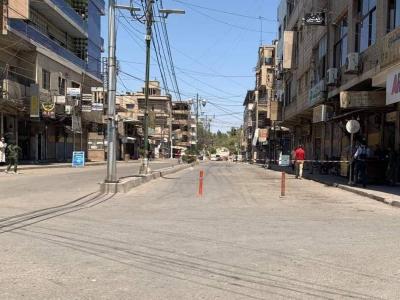The "Syrian Democratic Forces" responded to the fire sources launched by the "National Defense" factions and government forces in the countryside of Deir ez-Zor province, eastern Syria, after a bloody day that resulted in dozens of casualties and injuries due to renewed clashes between the two sides. While the "Syrian Democratic Council" held the Syrian regime responsible for the attack and for killing and terrorizing civilians with the aim of spreading chaos and inciting strife, analysts viewed the recent attack in the Deir ez-Zor countryside as an Iranian mailbox to American forces, aimed at pressuring them within the context of Iran's threat to respond to Israel's assassination of the Palestinian leader Ismail Haniyeh, the former head of Hamas, in Tehran at the end of July last month.
**Field Developments**
The "SDF" deployed more reinforcements and military mobilizations to areas that witnessed armed attacks, accompanied by low-flying international coalition aircraft. The clashes renewed over the past two days in areas and towns including Shuhail, Tayaneh, Drenj, Abu Hardoub, Abu Hamam, Lattwa, Granij, and Al-Basira. These urban areas are located in the eastern countryside of Deir ez-Zor and are militarily controlled by the "SDF," while the Euphrates River separates the control areas between the "SDF" and the international coalition on one side, and the Damascus forces and local factions loyal to Iran on the other side.
The "Syrian Democratic Council," the political wing of the "SDF," condemned the attacks on its influence areas in the eastern Deir ez-Zor countryside. It stated in a message published on its official website on Wednesday: "We condemn and denounce in the strongest terms these criminal and brutal attacks, and we hold the Damascus Authority fully responsible for these actions, warning it of the deterioration of the security situation there."
**Unity of Iranian Fronts**
Observers believe that the significance of the eastern region, represented by Deir ez-Zor province adjacent to the Iraqi-Syrian border, lies in its role as a land corridor linking the areas of Iranian factions in both countries towards southern Lebanon. Abdul Nasser Al-A'id, a military expert from Deir ez-Zor, stated that the recent attack primarily targeted the international coalition bases in the "Omar Oil" and "Koniko Gas" fields, where about 900 American soldiers are stationed. He told Asharq Al-Awsat that this attack is part of an Iranian strategy "prepared and executed by officers from the Iranian Revolutionary Guard and the Iraqi Popular Mobilization, especially the 'Sayyid al-Shuhada' faction," and comes as part of Iran's pressure attempts on the United States, similar to the attacks in Iraq and Yemen.
According to Al-A'id, the recent attacks in Deir ez-Zor were characterized by occurring in Syria, which now seems outside the scope of what is known as the unity of Iranian fronts, noting that "the operation was covered with a local facade through tribal fighters led by Ibrahim Al-Hafl, who has close ties to the Revolutionary Guard." He noted that the attack failed to achieve its main objectives "due to not reaching the American bases and attacking them on the ground, with predictions of similar attempts recurring in the future."
**Deir ez-Zor Geography**
It is worth noting that Deir ez-Zor province is militarily divided among several local and international parties, inhabited predominantly by tribal communities. It contains most of Syria's oil fields, with the "SDF," consisting of Kurdish and Arab factions, controlling the eastern bank of the Euphrates River, while government forces and Iranian militias control the western bank. The international coalition forces fighting ISIS under U.S. leadership are also present, and ISIS cells are still very active in the same area, targeting both regime forces and the "SDF" alike.




